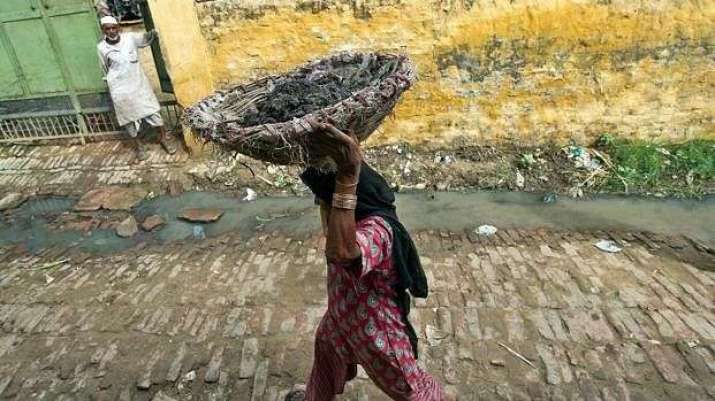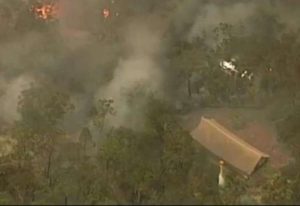
India, the world’s second most populous country with some 1.4 billion people, is facing a second and much larger wave of COVID-19 infections. The current epicenter of the virus is the western state of Maharashtra, home to the largest community of Ambedkarite Buddhists—those who have converted to Buddhism from the Dalit or so-called “untouchable” communities as a rejection of the Hindu caste structure, following the example of the politician and social reformer Dr. B. R. Ambedkar.
Sumit Ganguly, professor of political science at Indiana University, wrote in June last year about the living conditions of Dalits during the pandemic, noting: “Dalits have proved to be especially vulnerable to the disease for a range of reasons, chief among them poverty. The vast majority of Dalits are poor, despite a vast affirmative action program that India put in place shortly after independence.” (The Conversation)
Across India, hospitals have been filling quickly with supply shortages reported. The new wave of infections has hit quickly, rising from daily counts below 20,000 in early March to more than 100,000 in early April, and now nearly a week with daily case numbers above 200,000 and climbing. “Nobody imagined this would happen,” said Subhash Salunke, a medical adviser to the Maharashtra state government, this week. (The New York Times)
Members of the Abhayaratna Trust, a registered charity associated with the Triratna Buddhist Order, have reached out with an urgent appeal for donations to support their work and ensure that order members in India have funds for food and shelter as well as medical care.
Ciaran Maguire, chief executive of the Karuna Trust, a UK- and Germany-based non-profit organization affiliated with the Triratna Buddhist Order, told Buddhistdoor Global:
In Maharashtra, the worst-hit state, those below the age of 40 accounted for 48% of cases between January and March this year, Nearly 80,000 children from Maharashtra, Chhattisgarh, Uttar Pradesh, Karnataka and Delhi tested positive for the virus between March 1 and April 4, according to data by the Union health ministry. Out of these, more than 60,000 children were infected in Maharashtra in just a month—Children and young people are more vulnerable and getting more infected by the second wave in India.
Our Immediate Emergency Response
Our first priority is to support those directly impacted by the immediate crisis. This includes:
• Distributing emergency supplies, food kits and sanitation equipment
• Communicating accurate information on preventative healthcare to people in vulnerable communities, (Information on social distancing, use of PPE, sanitizers, and vaccinations)
• Working closely with local Governments to ensure emergency relief and welfare support reaches the most vulnerable
• Protecting women and girls vulnerable to increased risk of violence during lockdown
Karuna’s Emergency Work to Date
Karuna is in regular contact with our network of 35 partner organizations in India and Nepal. This gives us a unique opportunity to assess the needs and deliver aid to some of the most marginalized, vulnerable and hard-to-reach communities, who are often neglected.
Since the start of the first lockdown in March 2020 Karuna has been able to make a total of 65 emergency grants totaling £241,000 to 26 partner organizations, delivering emergency relief, including 29,820 food parcels and 22,580 medical kits to an estimated 143,000 people from marginalized covid affected communities across 6 Indian States and three districts of Nepal.
In addition, we have covered the core costs of all our partner organizations so their staff have been able to keep in touch with vulnerable communities and respond to their most urgent needs.
Over the next week we are planning to make a further round of emergency grants to deliver urgently needed emergency relief to unemployed migrant workers, children out of school, women at risk of violence, and people suffering directly from covid infection.
We will be doing everything we can to meet the increasing need in India and Nepal – and we are asking our supporters to help us respond.
Rehabilitation Response: Rebuilding Education, Gender Equality and Livelihoods
The effects of this crisis will continue long into the future. Once this immediate crisis starts to pass, we will continue to support our marginalized partner communities, so that people get the support they need to rebuild their lives.
• We will be providing additional educational support for children returning to school post-lockdown, with particular emphasis on preventing adolescent girls dropping out due to increased pressure on livelihoods.
• By providing support and counselling for women and girls from families disproportionately affected by the crisis, we will be ensuring as many women as possible are protected from violence and trafficking as a result of reduced family incomes. For these girls, ensuring their return to school is not just essential, it is life-saving.
• The loss of livelihoods and income with millions of men returning home will massively increase economic hardship for those already in poverty. By focusing on developing new livelihoods and improved conditions for daily wage laborers in marginalized communities, and helping them access welfare payments we will support them to achieve greater family security and improved opportunities for health and education.
Throughout the spring and summer of 2020, India was a virtual paragon of prevention as case numbers remained remarkably low despite the nation’s high levels of poverty and heavily populated urban centers. However, the preventative measures came with an enormous social and economic cost, as early lockdowns meant that millions of Indians lost work and had to return home from cities often hundreds of kilometers away. The return home was brutal in the May heat and many died along the way. By mid-summer last year, cases were rising across the country, although the wave was manageable and deaths peaked at around 1,000 per day for several months.
The latest surge is believed to be the result of a new strain of the coronavirus, possibly a “double mutation,” which has made the virus more transmissible and more dangerous among younger people.
“This is a variant of interest we are following,” the World Health Organization’s technical lead officer on Covid, Maria Van Kerkhove, told reporters last Friday. “Having two of these mutations, which have been seen in other variants around the world, are concerning,” she said, adding that both mutations increase transmission and reduce neutralization, possibly reducing the effectiveness of existing vaccines. (Al Jazeera)
On 21 April the country reported 315,802 new cases, the largest single-day count of the pandemic anywhere. As with much of the world, the poor are being especially hard hit, with few options but to maintain front-line jobs and utilize public transportation. India has reported more than 15.9 million COVID-19 cases so far with more than 184,600 fatalities.
See more
Urgent Appeal for Order members in India (Abhayaratna Trust)
Abhayaratna Trust
Karuna Trust
India’s coronavirus pandemic shines a light on the curse of caste (The Conversation)
India’s Health System Cracks Under the Strain as Coronavirus Cases Surge (The New York Times)
Coronavirus lockdown: The Indian migrants dying to get home (BBC News)
Is a double mutant COVID variant behind India’s record surge? (Al Jazeera)
Under India’s caste system, Dalits are considered untouchable. The coronavirus is intensifying that slur (CNN)












